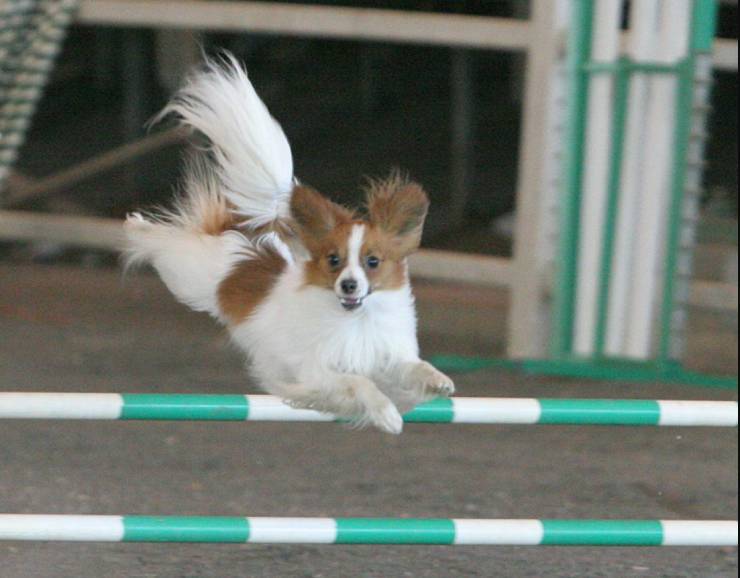There are some essential facts you need to know before you adopt a Papillon dog. The following article will cover Papillon dog care and training, how to take care of your pet, and how to groom your pet. We hope that this article has been helpful. If you’re considering adopting a Papillon dog, the following advice will help you make the best choice for your family. Make sure to read all of the information in this article to learn more about this wonderful breed.
papillon dogs Training

Papillon dogs are among the oldest types of toy spaniels. Their butterfly-like appearance is due to fringed hair on their ears. The dropped ear version is known as Phalene. If you want to train your Papillon in agility and tricks, here are a few tips. Listed below are some of the most important things to remember when training your Papillon. They can get easily bored if left alone for a long period of time.
Papillon dogs training begins the moment you bring them home from the shelter. Training a Papillon begins on the day you adopt them. They will show you how to communicate with them through dogmanship. Training a Papillon is easy with the Bone-Up dog training system. You can start by teaching your Papillon to wait before jumping onto the bed or a chair. Afterward, you can teach them to sit on a step and wait for you to lift it.
During the first few weeks of your puppy’s life, take him outside to relieve himself. Whenever you see him or her, praise him and reward him for being quiet. This will make cleaning up easier and will help you to get along with your new furry friend. Afterward, you can gradually lengthen the time between toilet sessions to help your new dog learn how to go outside. When your Papillon is comfortable with this routine, you can move on to other verbal commands.
Papillons can be trained to do almost anything. The breed has an inherent desire to please its owners, so consistency in positive training is crucial. They are naturally curious and intelligent creatures. During training, you should reward positive behavior and avoid punishing your pet if he exhibits unwanted behaviors. When you follow these tips, your Papillon will learn how to behave around other people, which is essential for their well-being.
papillon dogs Health
There are some common health problems in Papillons, which may be preventable. One of the most common is a deficiency in a protein known as cathepsin C. A deficiency of this protein can lead to a variety of symptoms in Papillons, including a slow metabolism, decreased stamina, and dry skin. The good news is that you can prevent many of these problems with proper care.
Several common ailments affect Papillons, including hip dysplasia and luxating patella. Hypoglycemia, also known as low blood sugar, is treatable in the early stages but can be fatal if left untreated. Symptoms of hypoglycemia include trembling and listlessness. Your dog may also limp or exhibit an unnatural gait. Thankfully, good breeders will test for risk factors.
Papillons require constant supervision and love. Because of their small size, they require constant affection and supervision. If you have enough time, you can also train them to perform tricks and learn obedience. These are two of the most important facets of Papillon dogs health care. And, they’re great pets for busy households. Just don’t expect them to live in a house for more than a few years – they need to be supervised constantly.
Papillons are not the right dogs for families with small children. While Papillons are gentle, they do not do well with small children. They can become injured by rough play or by jumping up on a child with a protective streak. However, if socialized from an early age, they’ll do well. But Papillons should never be left unsupervised with children. They don’t need a lot of exercise but they need regular walks to stay healthy.
papillon dogs food

As your Papillon gets older, its metabolism starts to slow down. Though this type of breed still requires a steady supply of energy and protein, you may need to lower the daily portion or switch to a senior small breed dog food. A good Papillon food should also contain healthy ingredients, such as chelated minerals and joint-supporting glucosamine. For additional information, please visit your veterinarian. This article will discuss the benefits of consuming these ingredients in Papillon dog food.
Papillons require a balanced diet that is high in protein and low in fat. Their protein and fat levels need to be at least 18% and 5%, respectively. Higher fat content means more calories, while higher protein provides lean muscle mass. Make sure to feed your Papillon food at the right time of the day, as you don’t want your dog to become malnourished or suffer from hypoglycemia.
If you plan to feed your Papillon more than two times a day, it’s best to implement an adult feeding schedule. This plan consists of feeding your Papillon a quarter to half cup of food at two meal times. During this period, you should try to avoid giving your dog table scraps, since it will only result in weight gain and unhealthy behaviors. This plan should be implemented at around 6 months.
Papillon puppies generally require around 300-340 calories per day. Depending on their activity level, you should increase their calorie requirements as they grow. A diet with more calories should be provided to keep your Papillon satisfied. You can also buy dry dog food in large quantities, which will save you money. These foods don’t need refrigeration, and they’re ideal for homes with limited space. So, what kind of Papillon dog food should you give your Papillon?
papillon dogs Grooming
Papillon dogs‘ coat is light, shiny, and bounces when the dog moves. To give your Papillon a shiny and healthy appearance, spend some extra time brushing and combing his coat. Pay special attention to the frill on the chest and the breeches on the hindquarters. Papillons have long, wavy hair, so brushing them often is essential. Papillons’ coats need occasional baths. Papillons’ hair tends to be thicker in certain areas, so leave it longer for your Papillon to frame his face. Brushing will also help keep it straight.
Papillon dogs‘ hair does not shed much, but it does need a good brushing. You can cut the hair off the face, but only if it is excessively long. It is not necessary to trim the hair around the ears and face. However, it is good to trim the fur off those areas occasionally to avoid papillon dog hair matting. Papillons should also have their feet trimmed regularly.
Papillon dogs do not require extensive grooming, but they should be brushed at least once a week. Focus on the ears and tail, as well as the backs of the thighs and insides of the hind legs. You may even find it helpful to brush your dog on a daily basis during heavy shedding periods. It is important to follow a schedule when brushing your Papillon dog. Make grooming fun and stress-free for your pet.
While Papillons don’t need frequent baths, they do need to be bathed every couple of months. You do not want to over-bath your dog as this can strip its natural oils. Choose a shampoo formulated for long haired dogs and avoid the use of harsh chemicals. Make sure you avoid soap residue near the eyes. Soap for your dog is safe and gentle enough not to irritate its sensitive skin.
Read also: Papillon Dog Grooming Tips: Everything You Need To Know
Finding a Papillon

If you are considering adopting a Papillon, there are many things you should know about the breed before making your decision. Papillons are generally friendly and get along well with other pets in the home, including cats. Papillons are also incredibly fearless and can easily boss larger dogs around, though this may not pose a problem. Unfortunately, many people purchase Papillons without knowing how much responsibility they will have. That means many dogs are in need of adoption or fostering. To learn more about this breed, visit the national breed club’s website.
Papillons can be found in many different locations, including shelters, rescue organizations, and private breeders. If you are looking for a competition dog or an athletic breed, a Papillon breeder is a great option. But if you’re not interested in breeding a dog, consider finding a dog at a shelter or breed rescue. Neither option is right for everyone, so do your research and do not let a dog scare you away.
One of the great things about owning a Papillon is its high energy and friendly personality. Papillons are happy to get along with all kinds of pets, but you should be careful to supervise the introduction of other animals. They don’t do well alone, so you’ll want to spend a lot of time with them so they’re not alone. You can even take them to the dog park to play with the other pets.
There are certain breeder contracts that specify that you must spay or neuter your new puppy before the contract is signed. These contracts often have a ‘happiness clause’ that states that the breeder will take back the dog if you don’t want it. This ensures that you won’t be stuck with a puppy you can’t care for. Just make sure you check the Papillon breeder’s website before signing any paperwork.
Read also: The Ultimate Guide To Choosing Papillon Dog






